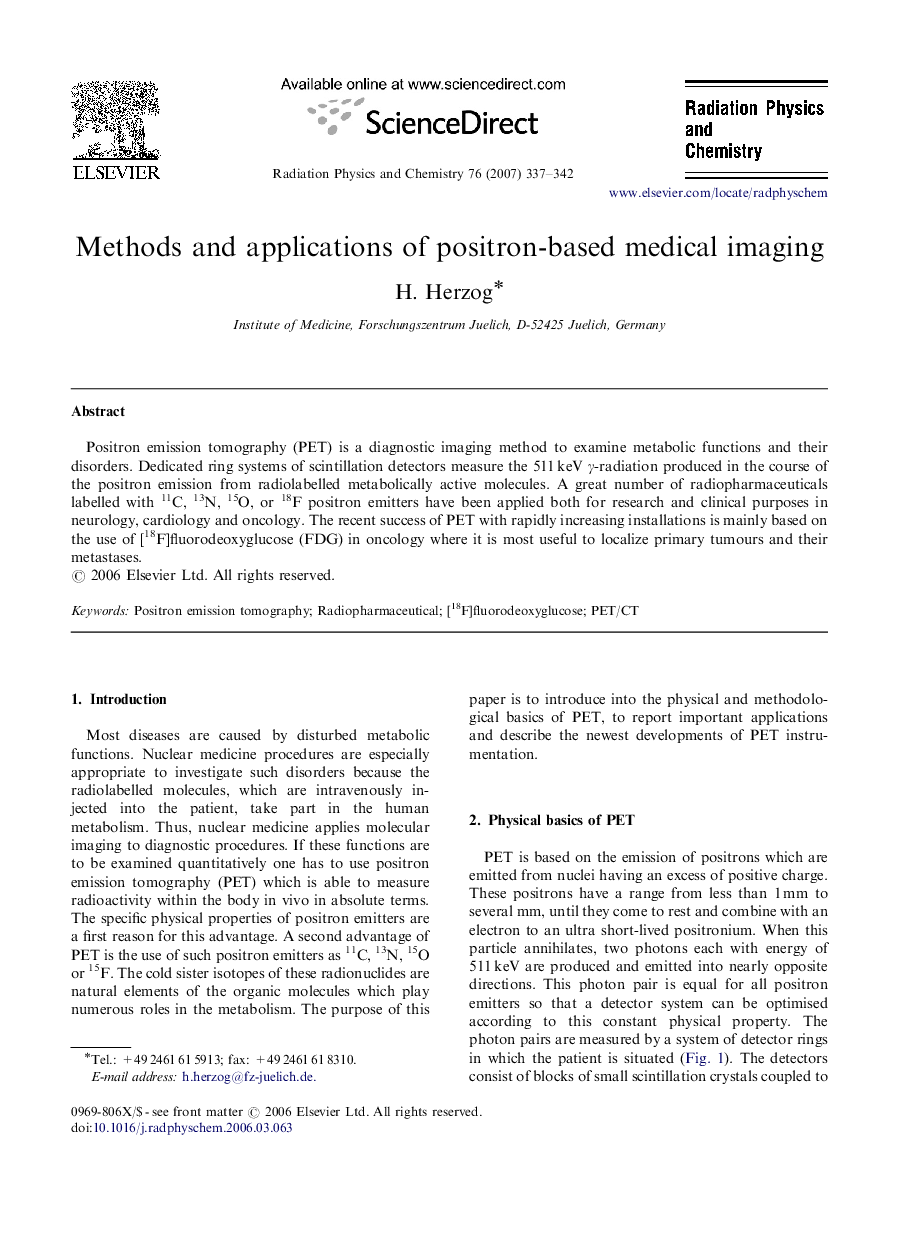| Article ID | Journal | Published Year | Pages | File Type |
|---|---|---|---|---|
| 1884835 | Radiation Physics and Chemistry | 2007 | 6 Pages |
Abstract
Positron emission tomography (PET) is a diagnostic imaging method to examine metabolic functions and their disorders. Dedicated ring systems of scintillation detectors measure the 511 keV γ-radiation produced in the course of the positron emission from radiolabelled metabolically active molecules. A great number of radiopharmaceuticals labelled with 11C, 13N, 15O, or 18F positron emitters have been applied both for research and clinical purposes in neurology, cardiology and oncology. The recent success of PET with rapidly increasing installations is mainly based on the use of [18F]fluorodeoxyglucose (FDG) in oncology where it is most useful to localize primary tumours and their metastases.
Related Topics
Physical Sciences and Engineering
Physics and Astronomy
Radiation
Authors
H. Herzog,
